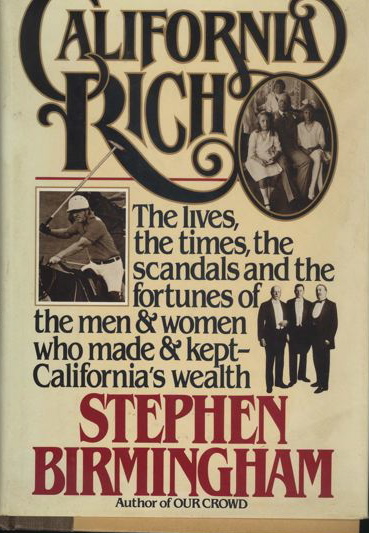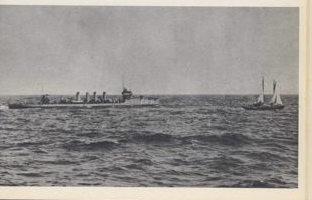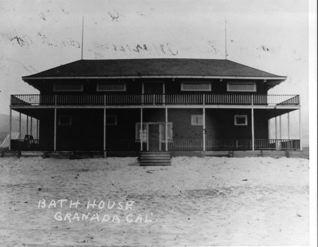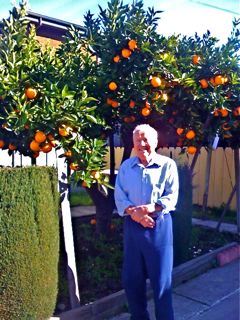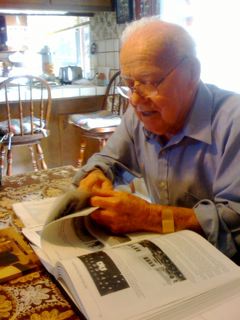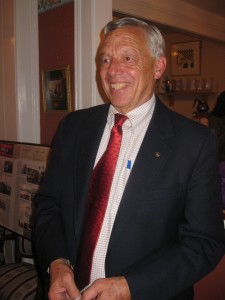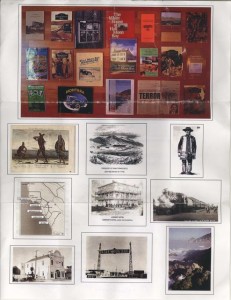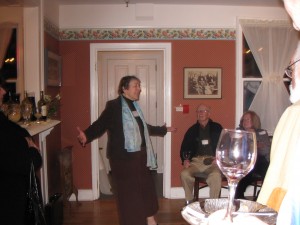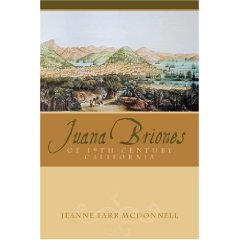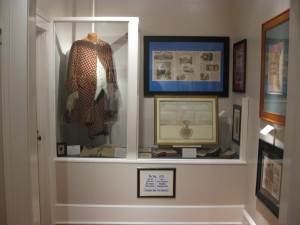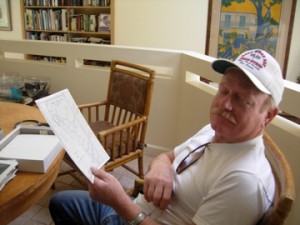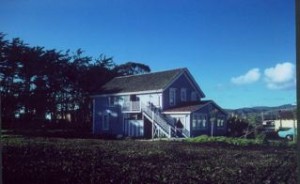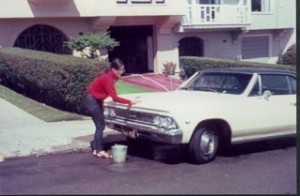An Ocean Shore Ride, 1952
As you pass Romano’s Restaurant*, going south, you will notice, on the spit, the remnants of a road which is now slowly sliding into the sea. But, as some of us, at least, will remember, it was not always this way.
The Ocean Shore Railroad had rumbled along those curves., hugging the cliffs, and, then, when it had defaulted in ’20, the Old Highway One followed the line. Well, for the most part.
Rumor has it that a starlet had driven a Cord off the road, an apparent suicide. Undoubtedly other cars had gone over the embankment. But it is the young and beautiful whose death tends to stick in the mind.
On an overcast winter morning we had rendezvoused at the Old Velodrome near Tenth and Market Streets in San Francisco. We proceeded down El Camino, and had swung over via La Honda to the coast.
We must have looked like throw backs in time preparing for the 1929 Berlin Six Day Race, or the New York Six.
Our silk jerseys, while perhaps not as colorful as those of today, reflected our ethnic origins or hometown, and not some anonymous plastics or cosmetics firm for which we had no use.
They sported in woven silken letters: Unione Sportiva Italiana, Deutsches Velo Klub, Norsk Sykell Klubb, Pedali Alpini, San Francisco Wheelmen, Belmont Bicycle Club, … .
We rode track bicycles with fixed gears, breaking with leather gloves that had been reworded by Italian shoemakers**, who had also put on our cleats.
Effeminate men, or worse, — we believed — road bikes which were not allowed in races even on the road, those of who who toured rode our track bikes even then.
Our track bikes had German names like Durkopp, Bauer, Schuhmacher, ,,, , Or, if they were an American marquee, they were made by men who looked like clones of Lem Motlow on the Jack Daniels label.
They, — Oscar Watson, Ken Winkie, Dewey Maxwell, Pop Brennan, — smoked cigars and brazed their machines beneath 55 [ed. 55 degrees] velodrome bankings.
Riders like, Willie the Whale, weighing close to three hundred pounds, tested them, riding motor pace on the track. The bikers were fitted with Durkopp or BSA hubs and cranks, the rims were made of laminated wood.
There were about thirty of us. The blue colors of the Unione Sportiva Italiana dominating the field of jerseys. Our cranks churned nearly the same cadence as we all rode nearly the same low winter gears, between 66 and 72 inches.
The wind shipped our legs. We inhaled air heavy with ocean spray. I followed Oscar Juner’s Durkopp jersey. Oscar and his partners, Nick van Male, and Peter Rich had raced at the Six Day Bike Race in San Francisco’s Civic Auditorium, and were now racing on Murphy Sabatino’s portable board track at the San Mateo County Fairgrounds.
We had passed Linda Mar and were now heading around the spit that lies south of Romano’s Restaurant. Beneath us the waves pounded the rocks. Ahead of the Durkopp jersey were other jerseys. Some of them I could not see through the fog.
One after the other, ominous shapes of riders drifted past me as we rotated pace.
We had rubbed our legs with Sloan’s liniment. They felt like fire at first. This subsided, then they were numb to the cold.
The pace slackened only slightly in the wind. We rotated more to maintain the momentum of the pace, than to insure that each of us took egalitarian distances. For instance, John Parks at six feet nine inches had enough wind in his face; he therefore, took shorter pulls at the front. Some, like Bruno and the Gatto brothers yelled oaths in Italian, when they felt the pace was not to their liking.
Riders swung off and rolled back to the rear of the pace line. The Durkopp jersey disappeared. I now took my pull at the front for about ten or twelve seconds, as I said, shorter pulls meant the momentum of our pace could be maintained even in thick fog and a head wind. Though this idea seemed on grate on Dan Kaljian who had formed his ideas of labor on his father’s farm near Avnik Armenia. When Dan took his turn he muscled the handlebars as if he still had a shovel in his hands.
The wind howled in my face as I tucked down for my pull at the front. I tore into the wind, yet was a particle in it.
Supposedly you do twenty percent more work at the front, but in the shifting head wind, it seemed as if that figure was greatly undeestimated.
I rolled off leaving the Norwegian sprint champion, Fred Fisk, to battle the wind. At some time in the latter part of the ride Fred had failed to hook John Parks’ wheel. At six feet five, reasonably Fred wanted to pace behind someone taller. At times I could hear him behind me cursing and swearing in Norwegian.
For John, of course, there would be no such pace line options.
I caught my breath now safely tucked in behind the Durkopp jersey again. Thankfully Dan Kaljian had suggested we warm up at the Boots and Saddles Bar in La Honda. Most of us had several belts of Christian Brothers brandy or Jack Daniels***. John Parks and Fred Fisk had vied each other for the attentions of the blonde. But, eventually, the ride had to resume, and she was left behind, but not alone.
Later in the ride we had refilled at Pete’s Cafe in Half Moon Bay.
I sucked more ocean spray and Sloan’s liniment into my lungs. We passed the spit . . . now slowly sliding into the sea, remnants of the curves still hugging the cliffs.
Beneath us, below the pounding waves, was the Cord.
—-
*Linda Mar, California, near San Francisco
**Such as Rosario Raieri of Balboa Shoe Service in San Francisco
***By Bartender and owner Oren Arms
An Ocean Shore Ride, 1952
As you pass Romano’s Restaurant*, going south, you will notice, on the spit, the remnants of a road which is now slowly sliding into the sea. But, as some of us, at least, will remember, it was not always this way.
The Ocean Shore Railroad had rumbled along those curves., hugging the cliffs, and, then, when it had defaulted in ’20, the Old Highway One followed the line. Well, for the most part.
Rumor has it that a starlet had driven a Cord off the road, an apparent suicide. Undoubtedly other cars had gone over the embankment. But it is the young and beautiful whose death tends to stick in the mind.
On an overcast winter morning we had rendezvoused at the Old Velodrome near Tenth and Market Streets in San Francisco. We proceeded down El Camino, and had swung over via La Honda to the coast.
We must have looked like throw backs in time preparing for the 1929 Berlin Six Day Race, or the New York Six.
Our silk jerseys, while perhaps not as colorful as those of today, reflected our ethnic origins or hometown, and not some anonymous plastics or cosmetics firm for which we had no use.
They sported in woven silken letters: Unione Sportiva Italiana, Deutsches Velo Klub, Norsk Sykell Klubb, Pedali Alpini, San Francisco Wheelmen, Belmont Bicycle Club, … .
We rode track bicycles with fixed gears, breaking with leather gloves that had been reworded by Italian shoemakers**, who had also put on our cleats.
Effeminate men, or worse, — we believed — road bikes which were not allowed in races even on the road, those of who who toured rode our track bikes even then.
Our track bikes had German names like Durkopp, Bauer, Schuhmacher, ,,, , Or, if they were an American marquee, they were made by men who looked like clones of Lem Motlow on the Jack Daniels label.
They, — Oscar Watson, Ken Winkie, Dewey Maxwell, Pop Brennan, — smoked cigars and brazed their machines beneath 55 [ed. 55 degrees] velodrome bankings.
Riders like, Willie the Whale, weighing close to three hundred pounds, tested them, riding motor pace on the track. The bikers were fitted with Durkopp or BSA hubs and cranks, the rims were made of laminated wood.
There were about thirty of us. The blue colors of the Unione Sportiva Italiana dominating the field of jerseys. Our cranks churned nearly the same cadence as we all rode nearly the same low winter gears, between 66 and 72 inches.
The wind shipped our legs. We inhaled air heavy with ocean spray. I followed Oscar Juner’s Durkopp jersey. Oscar and his partners, Nick van Male, and Peter Rich had raced at the Six Day Bike Race in San Francisco’s Civic Auditorium, and were now racing on Murphy Sabatino’s portable board track at the San Mateo County Fairgrounds.
We had passed Linda Mar and were now heading around the spit that lies south of Romano’s Restaurant. Beneath us the waves pounded the rocks. Ahead of the Durkopp jersey were other jerseys. Some of them I could not see through the fog.
One after the other, ominous shapes of riders drifted past me as we rotated pace.
We had rubbed our legs with Sloan’s liniment. They felt like fire at first. This subsided, then they were numb to the cold.
The pace slackened only slightly in the wind. We rotated more to maintain the momentum of the pace, than to insure that each of us took egalitarian distances. For instance, John Parks at six feet nine inches had enough wind in his face; he therefore, took shorter pulls at the front. Some, like Bruno and the Gatto brothers yelled oaths in Italian, when they felt the pace was not to their liking.
Riders swung off and rolled back to the rear of the pace line. The Durkopp jersey disappeared. I now took my pull at the front for about ten or twelve seconds, as I said, shorter pulls meant the momentum of our pace could be maintained even in thick fog and a head wind. Though this idea seemed on grate on Dan Kaljian who had formed his ideas of labor on his father’s farm near Avnik Armenia. When Dan took his turn he muscled the handlebars as if he still had a shovel in his hands.
The wind howled in my face as I tucked down for my pull at the front. I tore into the wind, yet was a particle in it.
Supposedly you do twenty percent more work at the front, but in the shifting head wind, it seemed as if that figure was greatly undeestimated.
I rolled off leaving the Norwegian sprint champion, Fred Fisk, to battle the wind. At some time in the latter part of the ride Fred had failed to hook John Parks’ wheel. At six feet five, reasonably Fred wanted to pace behind someone taller. At times I could hear him behind me cursing and swearing in Norwegian.
For John, of course, there would be no such pace line options.
I caught my breath now safely tucked in behind the Durkopp jersey again. Thankfully Dan Kaljian had suggested we warm up at the Boots and Saddles Bar in La Honda. Most of us had several belts of Christian Brothers brandy or Jack Daniels***. John Parks and Fred Fisk had vied each other for the attentions of the blonde. But, eventually, the ride had to resume, and she was left behind, but not alone.
Later in the ride we had refilled at Pete’s Cafe in Half Moon Bay.
I sucked more ocean spray and Sloan’s liniment into my lungs. We passed the spit . . . now slowly sliding into the sea, remnants of the curves still hugging the cliffs.
Beneath us, below the pounding waves, was the Cord.
—-
*Linda Mar, California, near San Francisco
**Such as Rosario Raieri of Balboa Shoe Service in San Francisco
***By Bartender and owner Oren Arms
xxxxxxxxxxxxxxxxxxxxxxxxx
About the author:
Erich von Neff is a San Francisco Longshoreman. He received his masters degree in philosophy from San Francisco State University and was a graduate research students at the University of Dundee, Scotland. Erich von Neff is well known on the French avant-garde and mainstream literary scenes. he is a member of the Poetes Francais and La Societe des Poetes et Artistes de France.




